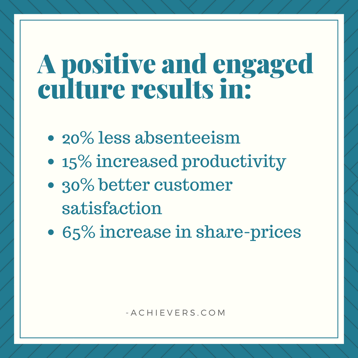Estimated Read Time: 11 Minutes

I stumbled upon this article recently – How to Identify When an Employee Is Becoming Uninterested – and it struck a chord with me.
What they discussed was all correct. An employee might become uninterested due to things like getting a new team member, dealing with a new manager, adjusting to new procedures, an employee leaving the company, or even a disagreement in the workplace.
However, there was an obvious missing piece that echoed in the silence.
Where was recognition in this?
Employees want to be recognized, but rarely are.
Especially since only 14% of organizations provide managers with the necessary tools for rewards and recognition.
Disengagement: When Employees Don’t Feel Valued

When employees start to become uninterested, they ask themselves three questions:
- Do I feel valued?
- Do I value the organization where I work?
- Do I feel I belong?
Feeling valued is the first question employees ask themselves because that’s how important feeling valued (and thus feeling recognized) impacts employees.
The real tire fire of disengagement (or uninterested at per Hppy’s article) happens when the employee does not feel valued in their role. Like a tire fire, you can smell this from miles away. The employee even starts to “check out” when this happens.
Hence, employees not only crave recognition, they need it. It’s necessary for people to feel valued – to be recognized for their work.
Lack of recognition is a top reason why people quit their jobs.
The Importance of Giving Recognition
According to Berks and Beyond, “When asked what leaders could do more of to improve engagement, 58% of respondents replied “give recognition.”’
Not convinced?
- 69% of employees would work harder if they felt their efforts were better appreciated. (HubSpot)
- Companies with recognition programs that are highly effective at improving employee engagement have 31% lower voluntary turnover. (Bersin & Associates)
- 87% of employees are more committed to stay with an organization that recognizes their performance. (Engage2Excel)
- 50% of employees believe being thanked by managers not only improved their relationship but also built trust with their higher-ups. (Cicero Group)
- Employees with performance recognition programs are 2x’s more likely to recommend their organization as a great place to work. (Engage2Excel)
Otherwise employees tend to become disengaged/uninterested.
Noted MIT professor Dan Ariely stated, “Ignoring the performance of people is almost as bad as shredding their effort before their eyes.”
Ouch.
Solving Employee Disengagement
In the article How to Identify When an Employee Is Becoming Uninterested, their solution was to get the disengaged employee involved.
That is a valid point.
Engagement is vital to combat employee disengagement. As mentioned in a previous blog, company culture and management highly impact employee engagement.
A few key positives for engaged employees are:
- 76% of employees in North America listed having a positive company culture as a main factor for staying with a company. (Achievers)
- 28% reduction in the organization’s turnover. (LinkedIn)
- Employee engagement programs can increase profits by $2400 per employee per year. (Workplace Research Foundation)
- Highly engaged business units achieve a 110% increase in customer ratings and a 20% increase in sales. (Gallup)
- Productivity increases by 20-25% when employees are engaged. (Achievers)
- 82% of respondents believe that culture is a potential competitive advantage. (Bersin by Deloitte)
- Companies with engaged employees outperform those without by 202%. (Gallup)
However, as we’ve already indicated, getting someone involved will only so far. You must recognize employees – giving recognition is vital to engage and retain employees.
Employees need to feel valued and feel like they belong. Employee engagement can assist with this, but only employee recognition hits both points.
Thus, the ultimate solution is to recognize your employees.
How to Recognize Your Employees
The solution is to develop employee recognition programs in your company or organization.
First, when creating an employee recognition program, take a moment to consider what aligns with your company culture and brand. We have discussed this in a previous blog.
Employee recognition can be anything from top sales recognition to customer service. The number one type of recognition that organizations have in place is for recognizing years of service.
However, consider adding some out-of-the-box recognition programs like innovation, safety, attendance, creative problem-solver, or “person who embodies the company values the most” to add more value for employees, align with your company culture, and to engage employees in other departments.
Disengagement does not only prey upon certain departments, it affects anyone and everyone, so you must consider recognition programs that can touch every department and individual.
Are Employee Recognition Programs Effective?
Yes. But in case you don’t believe us, here are some statistics.
- 81% of employees believe awards and recognition programs are effective. (Engage2Excel)
- 88% of employees agree it’s important that employers reward employees for great work. (AttaCoin)
- 88% of workers at companies with value-based recognition programs describe their overall experience at work as positive. (Globoforce)
- Organizations with effective recognition programs have 31% lower voluntary turnover than organizations with ineffective recognition programs. (WorkHuman)
- Employees with performance recognition programs are 2x’s more likely to recommend their organization as a great place to work. (Engage2Excel)
- 84% of HR Leaders say an employee recognition program has a positive effect on organizational culture. (Globoforce)
- 80% of employees would work longer hours for a more empathetic employer. (Dynamic Signal)
- Employees who feel adequately recognized are half as likely as those who aren’t recognized to say they’ll quit in the next year. (Gallup)
- Organizations with strategic recognition programs in place exhibit 28.6% lower frustration levels than companies without recognition programs. (Globoforce)
- 85% of employees feel that recognizing employees for performance makes them feel more valued and appreciated. (Engage2Excel)
- 90% of employees who work in places with effective rewards programs agreed with the statement “My work makes a difference.” (AttaCoin)
- 86% of HR Leaders say an employee recognition program benefits employee relationships. (Globoforce)
- 90% of employees say their recognition program positively impacts engagement. (GloboForce)
- 87% of employees are more committed to stay with an organization that recognizes their performance. (Engage2Excel)
- 38% of employees want to receive rewards in exchange for good work. (Xexec)
- 41% of companies that use peer-to-peer recognition have seen positive increases in customer satisfaction. (Globoforce)
- The vast majority of top performing companies (93%) reported their executives are not just willing to carry out rewards and recognition to remain competitive but are strong supporters of non-cash rewards and recognition as a competitive advantage for the organization. (Forbes)
- 89% of employees believe that employee engagement increases when employees are recognized for performance. (Engage2Excel)
Employee recognition programs greatly impact employee engagement, happiness, retention, and much more.
From an investment standpoint, where should employee recognition come in? According to WorldAtWork, 50% of employers see their employee recognition programs as an investment in their workforce.
So, employee recognition should be put into the same category as training, onboarding, company culture, and other employee investment essentials.
Recognition Is Cheaper Than Disengagement and Churn
Employee appreciation is cheaper than disengaged employees and the later employee churn. Thus, make the investment of appreciating and recognizing your team to save you thousands of dollars in disengagement, loss of knowledge, and churn-related losses.
Learn more about employee recognition or company culture by checking out these blogs:
- Cause and Effect: The Positives and Negatives of Employee Recognition
- Show Your Employees Some Love
- Business Branding: The Importance and Impact of Company Branding
- Aligning Company Culture with Your Brand
- Personal & Professional Gift Ideas to Celebrate Accomplishments
- Onboarding 101: A Guide to Starting an Onboarding Program
Reach out if you’d like to start a conversation about starting an employee recognition program.
![]() Kristina Hublar is your friendly neighborhood Marketing Specialist at Bruce Fox, Inc., which means she is the person behind the keyboard for the social media, emails, website, and other marketing efforts. In her spare time, you’ll find her plotting her next road trip, bobbing along to music while crafting, spending time with loved ones, or with her nose in a book.
Kristina Hublar is your friendly neighborhood Marketing Specialist at Bruce Fox, Inc., which means she is the person behind the keyboard for the social media, emails, website, and other marketing efforts. In her spare time, you’ll find her plotting her next road trip, bobbing along to music while crafting, spending time with loved ones, or with her nose in a book.








